[notice] Join us on a monthly “In The Garden Of Resurrection” journey towards a unique Christian prophetic art exhibition in October around the glorious theme of Christ’s resurrection. What must that journey have been like for Mary as she walked to the disciples burning with the message that Jesus was alive, with the revelation that He was surely God and had overcome death? I have joined Mary on her journey, and with me, a growing community of artists in Cape Town; journeying to the declaration of His resurrection with joy inexpressible and full of glory.
Join us on a monthly “In The Garden Of Resurrection” journey towards a unique Christian prophetic art exhibition in October around the glorious theme of Christ’s resurrection. What must that journey have been like for Mary as she walked to the disciples burning with the message that Jesus was alive, with the revelation that He was surely God and had overcome death? I have joined Mary on her journey, and with me, a growing community of artists in Cape Town; journeying to the declaration of His resurrection with joy inexpressible and full of glory.
In this month’s journey we reflect on the relationship through the ages between art and the way society sees itself. [/notice]
Ascending Art – what art says about our times
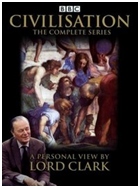 I have recently watched a remarkable documentary series by Kenneth Clark called Civilization: A Personal View in which he guides us from about the 8th or 9thcentury onwards (the so called dark ages) through the ages of western civilization up until today. He gives us this remarkable history of civilization through taking us on a tour of the art and sculpture of each era; showing with each era how the kind and quality of each civilization could ultimately be measured and understood not by the technological advances, nor by commerce or military strategy – but rather by the way in which humankind understands themselves – their value and their purpose. To find this information it is always in the art of a people and an era that he looks – for it is in art that the best and most believed in ideas of ourselves are reflected.
I have recently watched a remarkable documentary series by Kenneth Clark called Civilization: A Personal View in which he guides us from about the 8th or 9thcentury onwards (the so called dark ages) through the ages of western civilization up until today. He gives us this remarkable history of civilization through taking us on a tour of the art and sculpture of each era; showing with each era how the kind and quality of each civilization could ultimately be measured and understood not by the technological advances, nor by commerce or military strategy – but rather by the way in which humankind understands themselves – their value and their purpose. To find this information it is always in the art of a people and an era that he looks – for it is in art that the best and most believed in ideas of ourselves are reflected.
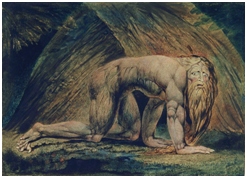
It’s remarkable to see how there were, at different moments of history, bursts of energy across the intellectual, creative, philosophical and scientific fields in unrelated, unconnected territories at the same time. From these moments of time – moments in which we, with our eyes of faith, can clearly discern the hand of God moving, raising up kings and putting them down as the book of Daniel testifies – we see God now bringing downfall to an empire, and now breathing on them a spirit of heroism with which to discover new lands, new sciences, new knowledge and new understanding. Most remarkable about this is that we know that His hand has one purpose from one generation to another: to glorify Jesus.
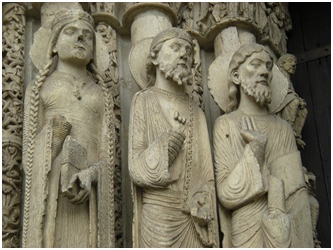
The art historian, Kenneth Clark refers to three or four times in history when man made a leap forward that would have been “unthinkable under ordinary evolutionary conditions”. One such time he says is 3000BC when “quite suddenly civilization appeared” in Egypt, Mesopotamia and in the Indus valley.
Then in the century of 1100 in India, China, Byzantium and most dramatically in Western Europe, in every area of life there was a “burst of intensity of existence”. He calls this the heroic age, and it would become the foundation of the ages that followed, giving impetus to everything that would come. Clark attributes this burst of energy and will in the most part, in the West, to the Church – saying that it could be argued that it was the church that gave birth to western civilization. The church was international, governed by men of great intellect. It was the ruling power of Europe. This was not yet the Holy Roman Empire of the Medicis – corrupt and ruthless – the image of catholic abuse of power that has caused many to reject the church’s history; but an earlier age.
This does create pause for thought though … about the often condemning way in which we have been taught to understand church history. What remains to be seen is what God’s perspective has been in all the ages that have passed since Jesus walked the earth. We have yet to fully perceive how magnificently God’s hands have governed each age to prepare a way for the King of Glory to return.
One stirring example of this is found in the west portal of Chartres, a cathedral in France built in the 1100’s. Clark draws our attention to the character of the heads of the Kings and Queens sculpted there and makes the remarkable claim that “they show a new stage in the ascent of western man”. These sculptures bring an expression of spirituality that he explains “is something entirely new in art”. The faces are “among the most sincere and aristocratic of faces ever produced by Western Europe”. At the time these faces were being built, men and women were coming from all over France, rich and poor alike to carry stone and provisions to the workers building the cathedral. It was a moment in time and place of unity in faith, of a diverse people working together in “the most profound silence”; a time when, to quote the chronicles of 1144, “all hearts were united and each man forgave his enemies”. It was these faces enobled by forgiveness, unity and faith that are reflected as kings and queens.
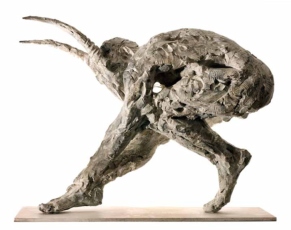
And what of our times? What does our art reflect about our imaginations and our perception of God and human life? It’s impossible to miss the furore caused by Brett Murray’s painting of Zuma at the Goodman Gallery in this past week and its subsequent defacing. The art piece is not unusual as contemporary art goes. So much of it reflects a degraded and low, loveless, even hateful view of God and man. Of course there are marvelous exceptions, but so much art we see is cruel, deliberately ugly, deliberately offensive, perverse, pornographic even – but worst of all, whether deliberately or not, insignificant and irrelevant. Its meaning(s) fall to the ground. It’s alarming – because we know that what we witness in art, is also surely what we are witnessing in the global injustices and indifference to injustice that mark our common era. It is one and the same mindset.
I remember when I first started at the work I currently have, it was as an arts and culture journalist. The first exhibition I went to was called (please excuse the language) “Asshole” by the artist Edward Young. At the exhibition strippers danced, and served Heinekens and Kentucky fried chicken. On the walls were pointless pieces of work and graffiti that are hard to remember because they were meant ultimately only to draw our attention to the artist’s point which is that we were all “assholes”.

We live in a country and in a time that has as many skilled artists and artisans as any era before it but without the hope humanity once placed in God. Take the formidable sculptor Dylan Lewis. His work is powerfully evocative, yet the images take shape out of an imagination of fear. Fear is the enemy of life – it paralyses our ability to question; our ability to resist oppression, to overcome injustice and perceive holiness. Fear makes action appear pointless.
One could speak endlessly about how there seems to be a fundamental disease in society’s thinking about itself, but it’s really only a prelude to ask, “what is God saying about the world? What is He giving to us that we may give them?”
Faith is a privilege against which nothing and no-one can compete. There is no greater advantage in life.
The story we tell about our world matters. Our thoughts about Jesus Christ (not merely “God”, but the very Triune God) and about our world determine the extent to which our art can sound the prophetic call to ascend to Life or descend to hopelessness and fear.
I believe we stand at the precipice of a dramatic social and spiritual turn around. The light of Christian faith in the world which once appeared to be growing dimmer and dimmer, is flickering bravely brighter and brighter; and God is preparing to cause this light to blaze, to astound and breathe on a world that is gasping for lack of the knowledge of the risen Lord Jesus Christ.
The art critic John Ruskin said, “Great nations write their autobiographies in three manuscripts—the book of their deeds, the book of their words, and the book of their art. Not one of these books can be understood unless we read the two others; but of the three, the only quite trustworthy one is the last.”
Let resurrection be the story we choose to tell about the times and the world we live in.






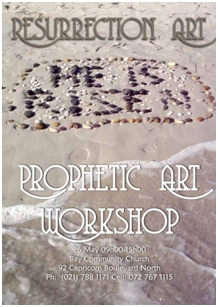

What a well written and open minded, relatively (as from a rigidly Christian point of view) insightful, and interesting comment on the series ‘civilization’. However although I agree Christianity has had much to do with the advance of civilization, in creating space for individual thinking, it has also acted contrary to it and the fundamentalist movement with it’s focus on the ‘apocalypse’ is clearly against any further growth of human kind and just anticipating the heavenly for themselves and gore and suffering for all others, and the end of civilization. Can you imagine a fundamentalist Christian or Muslim making any new discovery or civilizing contribution of any kind to human kind and civilization. If they did then they would not be fundamentalist but an escapee therefrom. I’d love to hear that I’ve got it wrong about fundamentalists.
Good news for you. You’ve got it wrong. lol.
Yes, it’s not as straightforward and simple as I put it. Fundamentalism is a complex human condition. Do you think a fundamentalist can contribute to civilization? It seems to me that as soon as fundamentalists become strong and numerous enough, the nice guy disappears and then it’s ‘believe & worship like us or suffer now at the hands of our minions as God has given us the power, the Word and conviction to see His glory on earth and to cleanse the earth of the unbeliever in His Name’. Think about it, why would a large group of fundamentalists allow a small group of dissenters to go about freely in their midst. In the past the
Christian fundamentalists haven’t allowed it (Muslim fundamentalists are actively applying it now) and their cruelty and dominance was their undoing – the bully never wins in the end. Can you tell me a different story from history and current trends about how fundamentalists of any religion have contributed to testable, demonstrative knowledge and peaceful civilization? There are bound to be some examples but nothing comes to my mind..
Christian “Fundamentalism” had a noble birth in “The Fundamentals” early last century, opposing the liberal theologies that negated the Gospel. However, it has moved from describing ‘defence of God’s Truth’ to describing ‘a rigid, closed mind-set that idealises a selected period of history and is rabidly aggressive in defending that ideal.’ This mind-set is found in Christian and Muslim communities, and is inimical to progress and spiritual growth to maturity (2 Peter 3:18). Christian art should stimulate Philippians 4:8,9. It should grow and stretch us out of the mundane into ever higher aspirations and ever deeper understandings. The fundamentalist mind-set doesn’t allow this. It sees itself as already ‘perfect’.